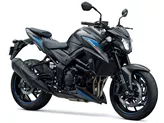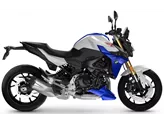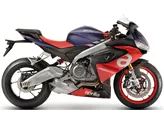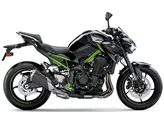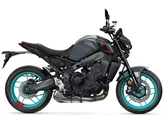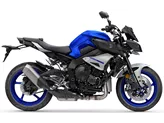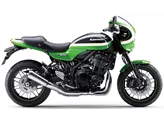Kawasaki Z900 2019 vs. Kawasaki Z1000SX 2017

Kawasaki Z900 2019

Kawasaki Z1000SX 2017
Overview - Kawasaki Z900 2019 vs Kawasaki Z1000SX 2017
The Kawasaki Z900 2019 and the Kawasaki Z1000SX 2017 are both powerful motorcycles with similar engine types, fuel systems, transmissions, and cooling systems. However, there are several notable differences between the two models.
In terms of engine power, the Kawasaki Z1000SX 2017 has a slight advantage with 142 HP compared to the Kawasaki Z900 2019's 125.4 HP. Similarly, the Z1000SX has a higher torque rating of 111 Nm compared to the Z900's 98.6 Nm. This means that the Z1000SX may offer slightly better acceleration and top speed.
In terms of suspension, both models feature upside-down telescopic forks at the front and swing arm suspension at the rear. However, the Z1000SX offers more adjustability with compression, preload, and rebound adjustments for both the front and rear suspension. The Z900, on the other hand, only offers preload and rebound adjustments. Additionally, the Z1000SX has a slightly longer rear suspension travel of 144 mm compared to the Z900's 140 mm.

Kawasaki Z900 2019
The chassis of the two models also differs. The Z900 has a steel frame, while the Z1000SX features an aluminum frame. This may result in a slight difference in weight distribution and handling characteristics.
Both models feature double disc brakes at the front with a diameter of 300 mm and four-piston calipers. However, the Z1000SX's front brakes also incorporate radial, monoblock, and petal technology, which may provide improved braking performance compared to the Z900.
In terms of advanced rider assistance systems, both models are equipped with ABS. However, the Z1000SX also features traction control, providing additional safety and control.
In terms of dimensions and weights, the Z900 has a slightly longer wheelbase of 1450 mm compared to the Z1000SX's 1440 mm. The Z900 also has a lower seat height of 795 mm compared to the Z1000SX's 815 mm. However, the Z1000SX is heavier, weighing 235 kg compared to the Z900's 210 kg (both weights include ABS).

Kawasaki Z1000SX 2017
Moving on to the strengths and weaknesses of each model, the Z900 2019 is praised for its light and natural handling, high stability, silky engine with strong mid-range power, high chassis transparency, and comfortable sitting position. It is also considered to be reasonably priced. However, it is criticized for having a TFT display mounted too low, cumbersome menu operation, and rearview mirrors with limited visibility.
On the other hand, the Z1000SX 2017 is praised for its great tuned engine, strong brakes, and easy driveability combined with high performance. However, it is noted that the Z1000SX is sensitive to tire choice, which may affect its overall performance.
In conclusion, while both the Kawasaki Z900 2019 and the Kawasaki Z1000SX 2017 are powerful motorcycles with similar engine types and features, they have notable differences in terms of power, suspension adjustability, chassis material, braking technology, advanced rider assistance systems, dimensions, and weights. Understanding these differences can help potential buyers make an informed decision based on their specific preferences and riding style.
Technical Specifications Kawasaki Z900 2019 compared to Kawasaki Z1000SX 2017
Pros and Cons in comparison
Pros and Cons in comparison
Kawasaki Z900 2019

Fortunately, the new Kawasaki Z900 has lost none of its character through the use of electronics. It is and remains a playful mid-range naked bike, which at the same time masters the brisk pace on the country road magnificently. The riding pleasure and suitability for everyday use are high, the now installed riding aids offer a plus in safety. Your opponents will have a really hard time from now on.
Kawasaki Z1000SX 2017

Kawasaki's Z1000SX is a harmonious motorbike. Brakes, engine and chassis are all in good order. The look is a bit aggressive, but the bike is easy and transparent to ride.
Price Comparison Avarage Market Price Kawasaki Z900 vs Kawasaki Z1000SX
There are a few key differences between a Kawasaki Z900 2019 and a Kawasaki Z1000SX 2017. There are the same number of bikes of both models available on the 1000PS.de marketplace, specifically 40. It takes less time to sell a Kawasaki Z1000SX with 103 days compared to 116 days for the Kawasaki Z900. Since model year 2017 1000PS.de editors have written 46 reviews for the Kawasaki Z900 and 14 reviews for the Kawasaki Z1000SX since model year 2011. The first review for the Kawasaki Z900 was published on 11/11/2016 and now has more than 93,200 views. This compares to more than 9,900 views for the first review on Kawasaki Z1000SX published on 05/10/2010.





